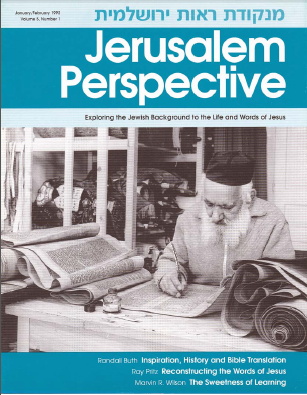Hebrew Nuggets is an article series that introduces beginners to Hebrew letters, Hebrew vocabulary and spiritual insights from the Hebrew tradition.
Revised: 6-Oct.-2015
 Grace seems to be plentiful in the New Testament but rare in the Hebrew Scriptures. Many Christians have gained the false impression that the God of the Jewish Bible is typically a God of wrath, while the God of the New Testament—almost a different God—is a God of love. This impression is strengthened by such New Testament statements as “For the law was given through Moses; grace and truth came through Jesus Christ” (John 1:17; RSV). Is God’s grace more prevalent in the New Testament than in the Jewish Scriptures? The answer is no, but the explanation of how this misperception gained acceptance among Christians is complicated.
Grace seems to be plentiful in the New Testament but rare in the Hebrew Scriptures. Many Christians have gained the false impression that the God of the Jewish Bible is typically a God of wrath, while the God of the New Testament—almost a different God—is a God of love. This impression is strengthened by such New Testament statements as “For the law was given through Moses; grace and truth came through Jesus Christ” (John 1:17; RSV). Is God’s grace more prevalent in the New Testament than in the Jewish Scriptures? The answer is no, but the explanation of how this misperception gained acceptance among Christians is complicated.
Paid Content
Premium Members and Friends of JP must be logged in to access this content: Login
If you do not have a paid subscription, please consider registering as a Premium Member starting at $10/month (paid monthly) or only $5/month (paid annually): Register
One Time Purchase Rather Than Membership
Rather than purchasing a membership subscription, you may purchase access to this single page for $1.99 USD. To purchase access we strongly encourage users to first register for a free account with JP (Register), which will make the process of accessing your purchase much simpler. Once you have registered you may login and purchase access to this page at this link:
For the transliteration system used in this series, click here.
































































































